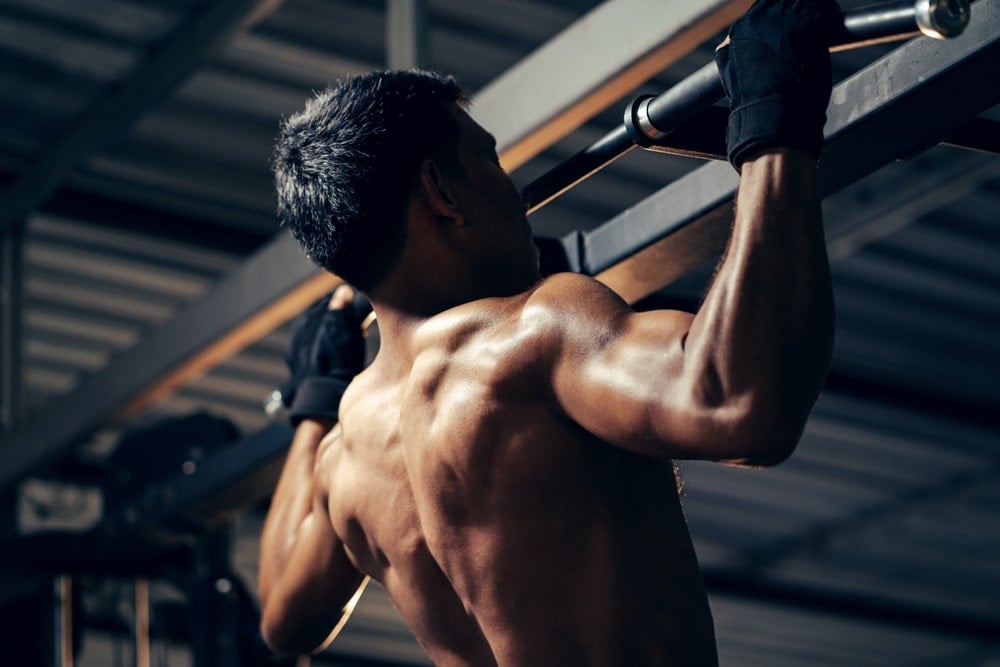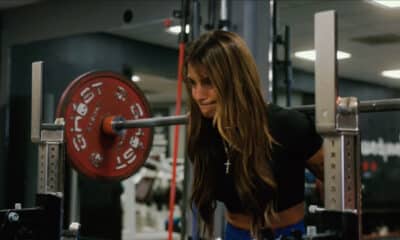Unlock Your Full Potential: 7 Surprising Benefits of Mastering Pull-Ups You Didn’t Know About
Pull-ups—they might just be one of the humbling challenges in the fitness world, and trust me, you’re not alone if you’re struggling to nail that first rep. Even those who seem fit and athletic often find themselves intimidated by this powerful bodyweight exercise. Take, for instance, a study from April 2020 featured in the *Journal of Strength and Conditioning Research*, which looked at nearly 1,000 recruits in a law enforcement training program. Shockingly, only about 20 percent of the female recruits could do more than two pull-ups. If you’ve found yourself in a similar boat, know that countless others are right there with you.
“A true bodyweight pull-up can be considered the holy grail of movement patterns for a lot of people,” explains Stacy Orsborn, a certified personal trainer and co-founder of Victress MVMT. What she’s hit on here is really profound. Yes, it takes time, a lot of sweat, and sometimes even tears to master pull-ups, but the rewards are especially worthwhile. Not only do you get a stronger upper body and a fortified grip, but you also ignite a spark of empowerment that can enhance how you tackle the rest of your day.
So, what exactly can mastering pull-ups do for you? Buckle up as we dive into the incredible benefits they provide, how you can correctly execute them, and ways to modify them no matter where you’re starting from.
The Benefits of Pull-Ups
**1. Increased Functional Strength**
Let’s face it: we all want to feel stronger. As Ingrid Clay, a certified personal trainer on Chris Hemsworth’s platform Centr, puts it, “The biggest benefits of pull-ups include increased upper-body strength, improved grip strength, and enhanced muscular endurance.” These aren’t just fitness buzzwords—they translate to real-life capabilities. Want to lift that heavy bag of dog food? Pull-ups are your secret weapon. They engage a ton of muscles, activating everything from your lower back right to your fingertips.
**2. Better Posture**
Did you know that getting stronger can actually improve your posture? According to Clay, pull-ups primarily work the muscles in your back—think lats, rhomboids, and trapezius—along with stabilizer muscles in your core and shoulders. This means not only will you look better standing and sitting up tall, but you’ll also feel more comfortable doing it. Posture is a big deal, especially if you spend long hours hunched over a desk.
**3. Boosted Sports Performance**
Think about your favorite sport for a moment. Whether it’s rowing, swimming, or rock climbing, pull-ups can give you that extra edge. “Mastering pull-ups will give you a huge advantage in terms of power and endurance,” says Orsborn. This means whether you’re smashing that overhead shot during pickleball or paddling with more ease on the water, those pull-ups will translate into your game.
**4. Improved Grip Strength**
Strong grip? Yes, please! Trust me, the importance of grip strength goes way beyond just impressing your friends at the gym. Easier tasks like opening stubborn jars or lugging home groceries suddenly become a breeze. Plus, a study from November 2022 says a strong grip can even correlate with a longer lifespan. Consistently working on these muscles may help ward off health issues down the line, so get those reps in!
**5. Healthier Shoulders**
Did you know that your shoulder joint boasts the largest range of motion in the human body? Pull-ups utilize almost this entire range, bolstering stability in your shoulder girdle and activating the muscles around your scapulas—essentially your shoulder blades. “Developing back and shoulder strength supports your posture and makes everyday movements easier, which is crucial as you age,” notes Orsborn.
**6. Balanced Strength**
It’s easy to unknowingly favor push exercises in our workouts—think planks, push-ups, or presses. Unfortunately, this can lead to imbalances where your pushing muscles inadvertently become much stronger than your pulling muscles. A study from April 2013 in the *International Journal of Sports Physical Therapy* highlighted that pushing muscles were typically 1.5 to 2.7 times stronger than pulling muscles in active adults. Integrating pull-ups regularly into your routine can help keep that balance to avoid stress on your body.
**7. Better Mental Health**
Research consistently shows that strength training can uplift mental health. Think reduced symptoms of anxiety and depression, and a surge in self-worth. There’s something truly magical about progressing toward a goal as daunting as a pull-up. Completing your first one, or being able to do multiple in a row, sparks an incredible sense of accomplishment. It’s hard not to feel empowered!
### How to Do a Pull-Up Perfectly Every Time
Ready to take on that pull-up? You’ll need a sturdy pull-up bar—preferably one that’s high enough for you to hang straight down without hitting the floor. You might need to hop up onto something stable to reach that bar, so grab a friend to spot you if needed. Here’s how to do a proper pull-up with good form, as recommended by Clay and Orsborn:
1. Begin by grasping the bar with an overhand grip—your palms facing away from you, hands slightly wider than shoulder-width apart. Let your body hang straight, arms fully extended.
2. Engage your core and pull your shoulder blades down and together. Use your lats to pull your chest toward the bar.
3. As you pull, keep your elbows tucked close to your sides, pointing downward.
4. Keep going until your chin rises above the bar.
5. Hold briefly, keeping your shoulders down and away from your ears.
6. Slowly lower yourself back down with control to return to the starting position.
Some tips: “Maintain a tight core and control every movement to avoid using momentum,” says Orsborn. Think about bending the bar into an upside-down “U” shape with your lats to fully engage those muscles.
### Pull-Up Muscles Worked
Your pull-up primarily targets your back muscles, with the latissimus dorsi (or “lats”) shouldering most of the work. These muscles stretch all the way from your armpit to your spine, forming a sort of “wing” structure to your back. Alongside the lats, your trapezius and rhomboids—two key players in the upper back—are essential for executing those pull-ups. Your forearms, shoulders, and biceps also join the party during this movement. And yes, your core is on duty too, ensuring everything stays aligned while you hang from the bar.
So, whether you’ve never attempted a pull-up or are working to refine your technique, just remember: every great change starts with that first, often intimidating, step. Keep grinding, keep lifting, and you’ll find that every rep brings you closer to your goals.Pull-ups can feel like an imposing challenge, especially if you’re just starting out on your fitness journey. But don’t let that discourage you! There are various modifications you can adopt to tailor the exercise to your current fitness level. By making these adjustments, you’re not just working on your strength; you’re enhancing the essential mind-body connection necessary for effective pull-ups. This means you’ll engage the right muscles, making the movement more intuitive and manageable.
Fitness expert Clay shares some of her favorite modifications that can guide you toward performing unassisted pull-ups. She believes that incorporating these exercises helps you build the strength and, more importantly, the confidence to tackle the real deal. Here’s a breakdown of effective modifications you can include in your workout routine.
**1. Scapular Squeeze**
This foundational move, often referred to as the hanging scapular retraction, is great for activating your back muscles. It plays a pivotal role in helping you develop the strength you need to progress to real pull-ups.
– Start by carefully stepping up to the pull-up bar. Grip it with your arms fully extended, hands slightly wider than shoulder-width apart, and your palms facing away from you.
– Without bending your elbows, focus on squeezing your shoulder blades down and together.
– Hold that squeeze for a second, then relax. That’s one rep!
– Repeat this process, tuning into how your muscles are engaging.
**2. Negative Pull-Up**
Negative pull-ups are all about controlling the descent of your body, which is a crucial part of the overall pull-up motion. Since you begin this exercise at the top position, you might need to jump or step onto a box to get there.
– Begin by stepping up to the pull-up bar. With an overhand grip and hands slightly wider than shoulder-width, jump or step up so that your chin is above the bar, elbows hugged close.
– Pull your shoulder blades back and down, making sure they stay away from your ears as you slowly lower yourself down.
– Take your time with this; the goal is to control your descent until your arms are fully extended.
– That’s one rep—now go ahead and repeat!
**3. Assisted Pull-Up**
One of the reasons pull-ups are so challenging is that you’re lifting your entire body weight. By using a resistance band or a bench, you can decrease the workload and really focus on the movement pattern.
– Secure a large resistance band around the pull-up bar and loop one end through the other.
– Grab the bar with an overhand grip and place one or both feet in the resistance band loop.
– Lean into that support, letting the band take some of your weight, and extend your arms fully.
– Engage your core and pull your shoulder blades down and together as you draw your chest toward the bar.
– When you reach the top, hold that position for a moment, ensuring your shoulders remain low.
– Then, control your descent back to the starting position, which counts as one rep. Don’t forget to repeat!
If you don’t have access to a resistance band, you can replicate this movement with a box or a step, allowing you to assist yourself as needed.
**How to Incorporate Pull-Ups into Your Routine**
To effectively master pull-ups, make these modifications a consistent part of your workouts. Trainer Orsborn recommends performing three sets of five to eight reps of any of the suggested modifications, practicing two to three times a week.
As you gain strength, challenge yourself by decreasing the assistance or adding more reps. Once you feel capable of doing a pull-up on your own, you can intensify your routine by varying your grip, experimenting with time under tension, or even adding weight.
It’s crucial to remain patient throughout this process. Progress may seem slow, but remember: “The key is consistency,” Orsborn emphasizes. Committing to a regular workout schedule focused on enhancing your technique will pay off. Keep showing up for yourself, and before you know it, those unassisted pull-ups will be a regular part of your fitness repertoire. You’ve got this!















